At the Lake
Heading to the lake this summer? You may want to rent a kayak for the best views. According to Amy Bennett, a return to the great outdoors is another opportunity to peek in on the neighbors, and it just might have something to teach us about human nature.
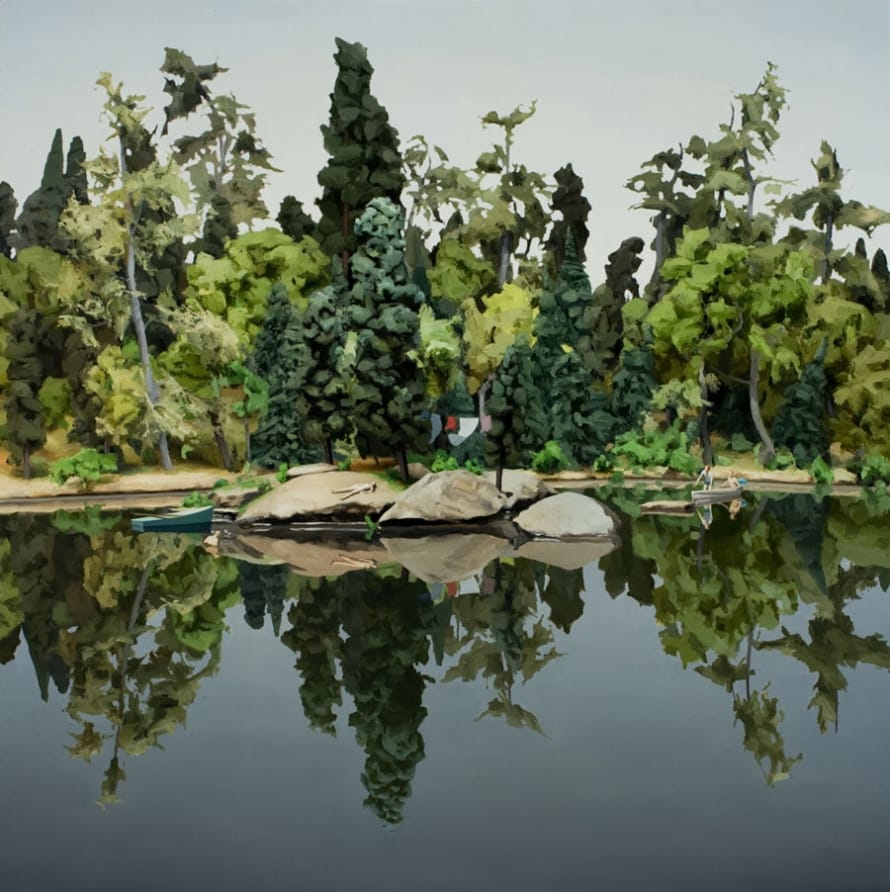
Interview by Nicole Pasulka
I interviewed you back in 2007, and at the time you had a show called “Neighbors” at Richard Heller Gallery. You’d been making the paintings from a huge model of a suburban-ish neighborhood in your studio. From what I understand, the “At the Lake” series was also painted from a model. What’s your process like for these newer paintings?
I spent a couple months building an L-shaped strip of lakefront. There are about 13 feet of styrofoam land, resin water, wire and foam trees, and a painted sky backdrop. There are a couple of houses and cabins, but mostly the emphasis is on the landscape. I create different scenarios in the model, light the scenes, and paint from it as a still life in the same way that I did for my neighborhood series. Continue reading ↓
Amy Bennett’s show “At the Lake” was recently on view at Richard Heller Gallery. She is also represented by Galleri Magnus Karlsson, where she will have a show of prints in September 2009, and Tomio Koyama Gallery, where she will have a solo show in November 2009. All images courtesy the artist, copyright © Amy Bennett, all rights reserved.
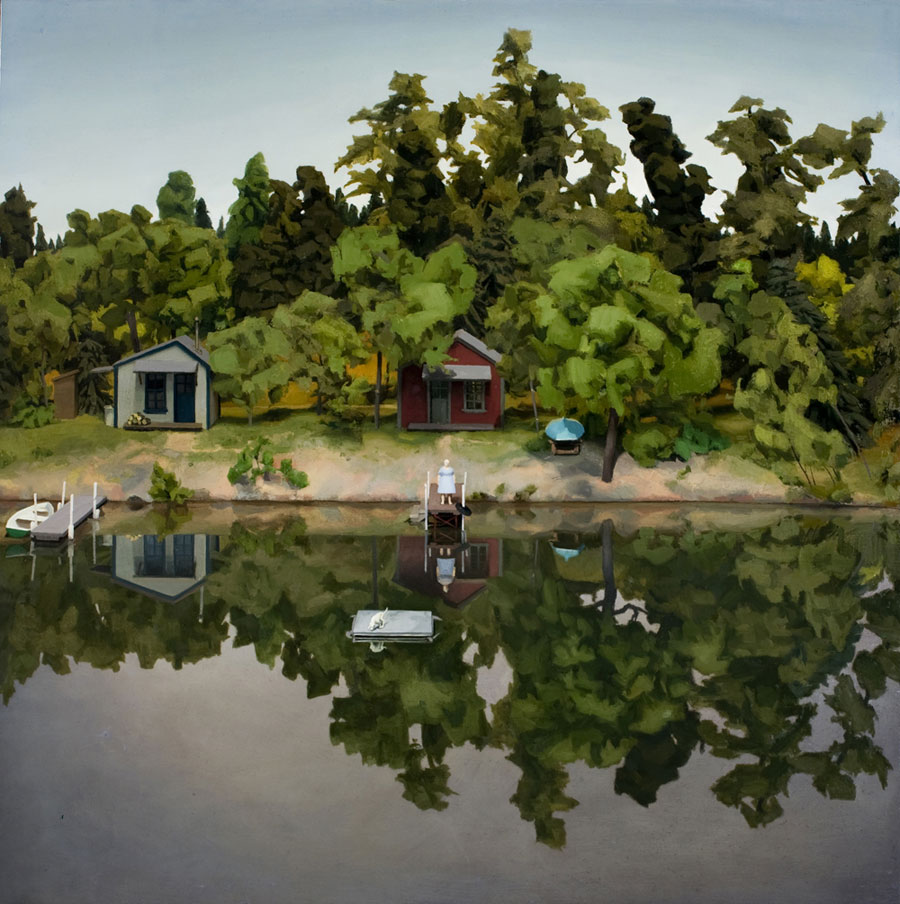
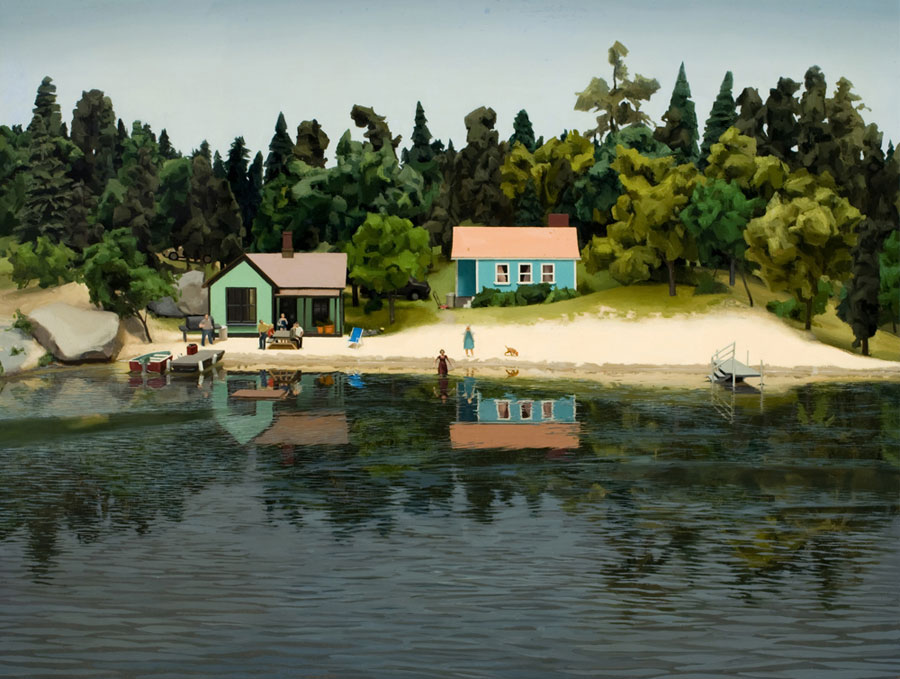
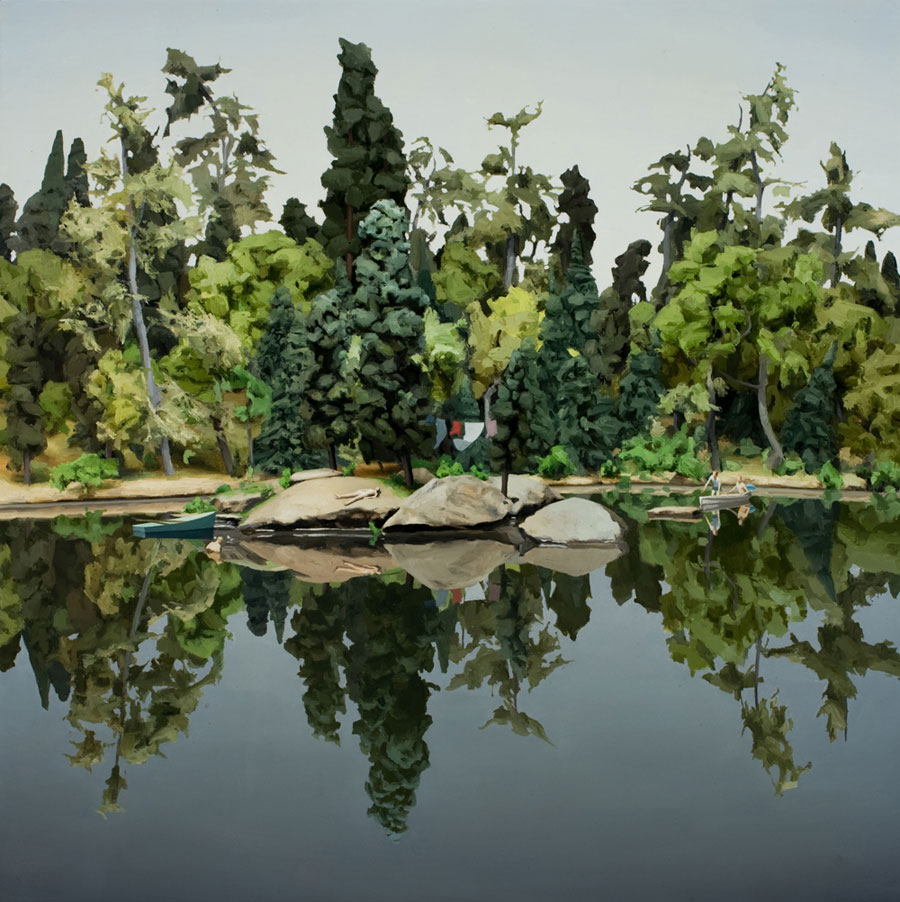
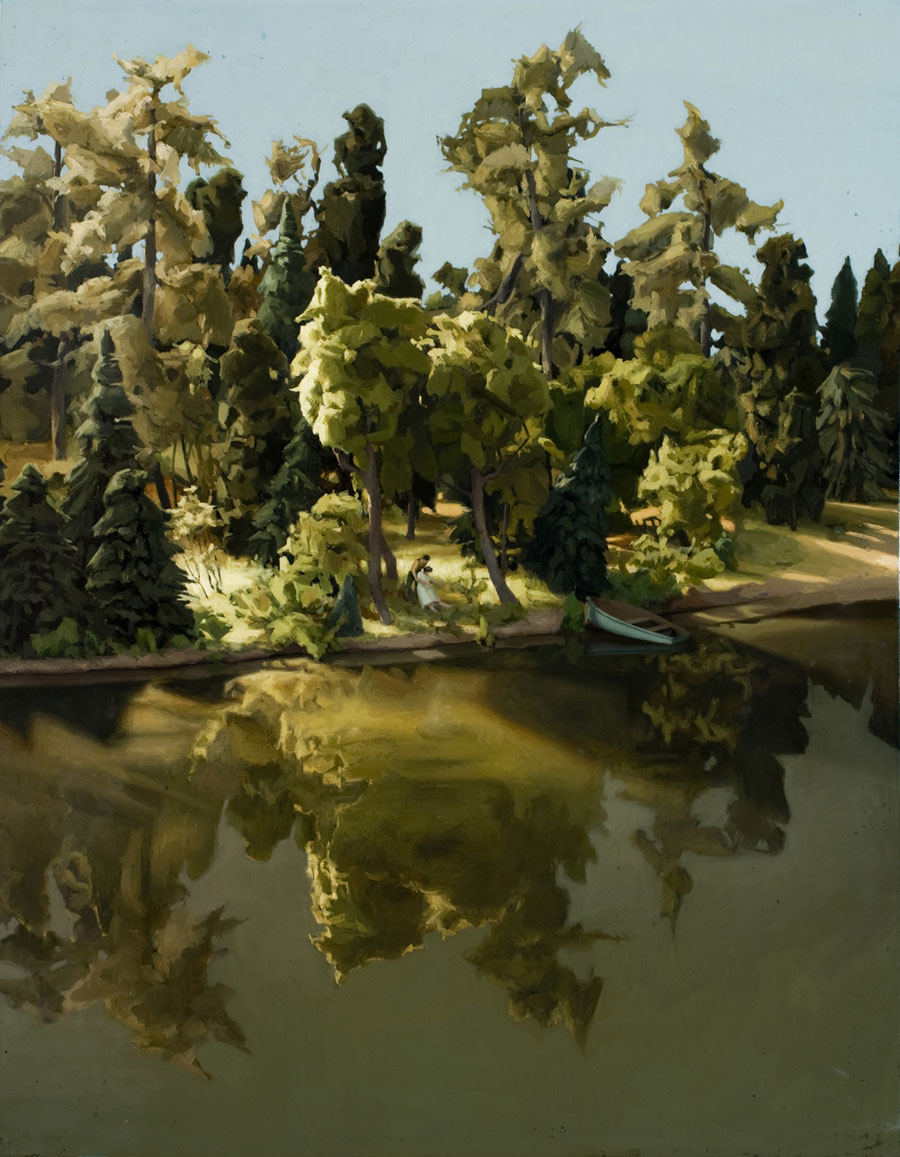
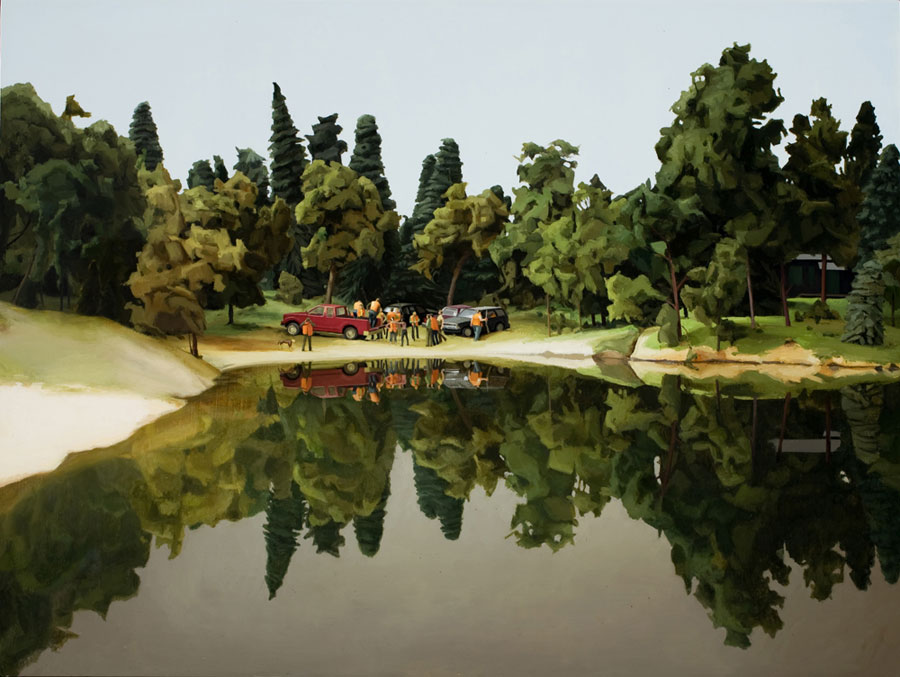
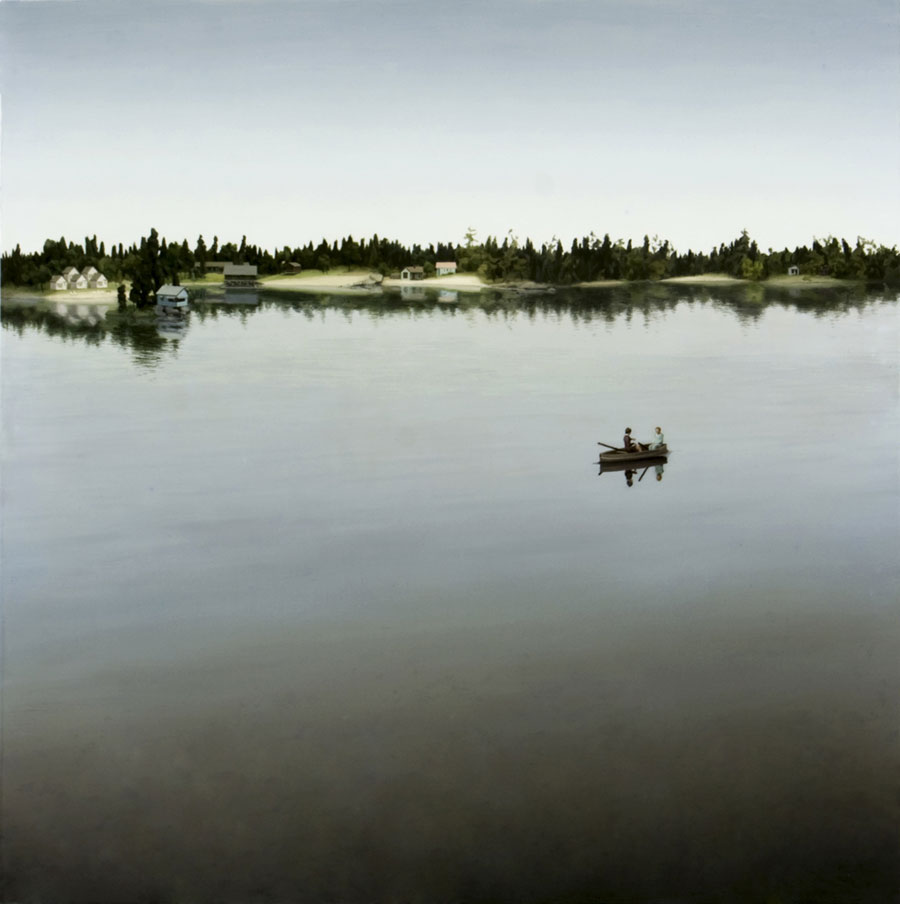
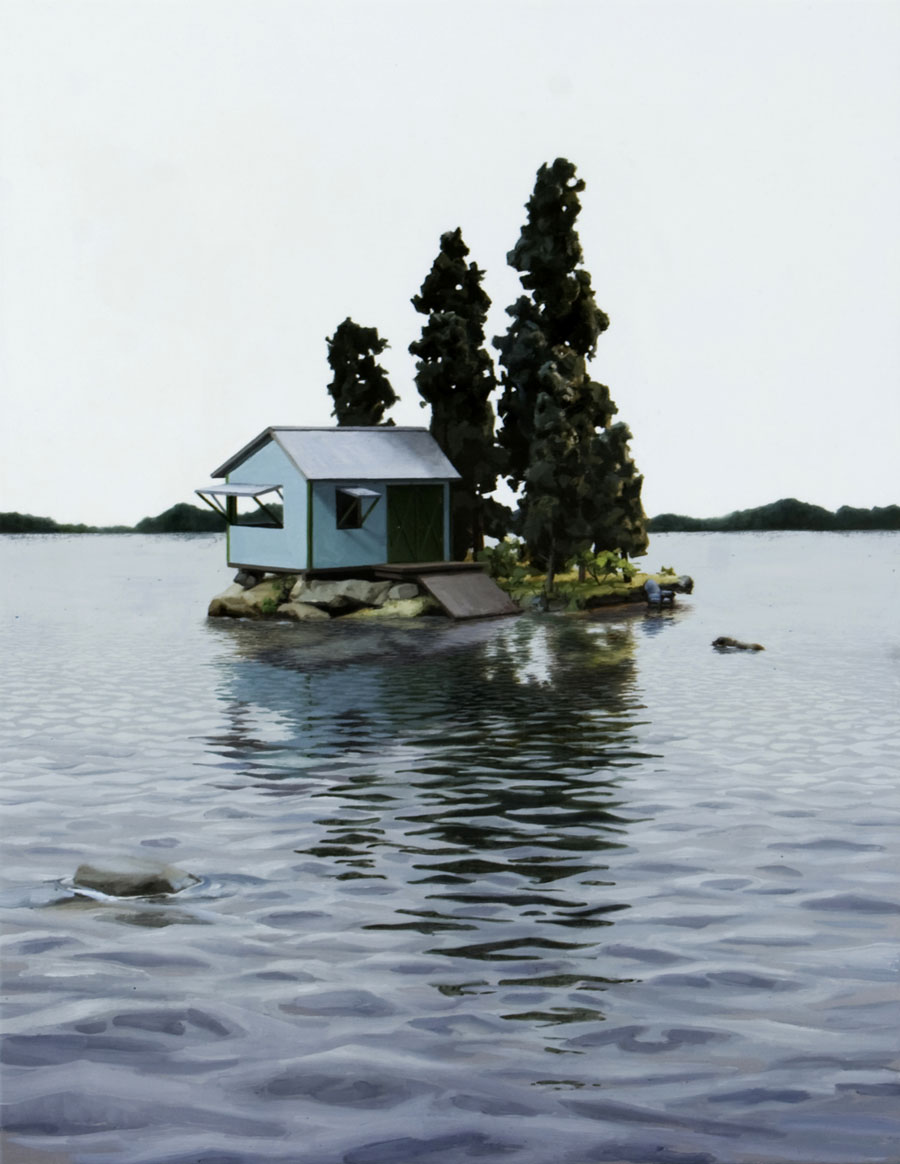
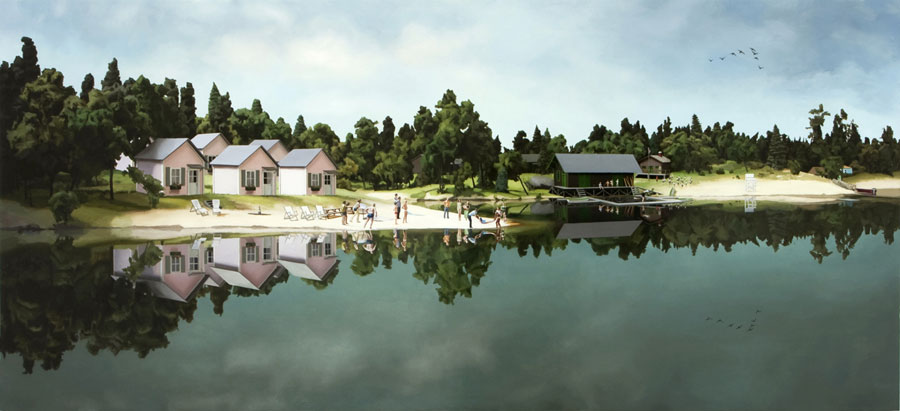
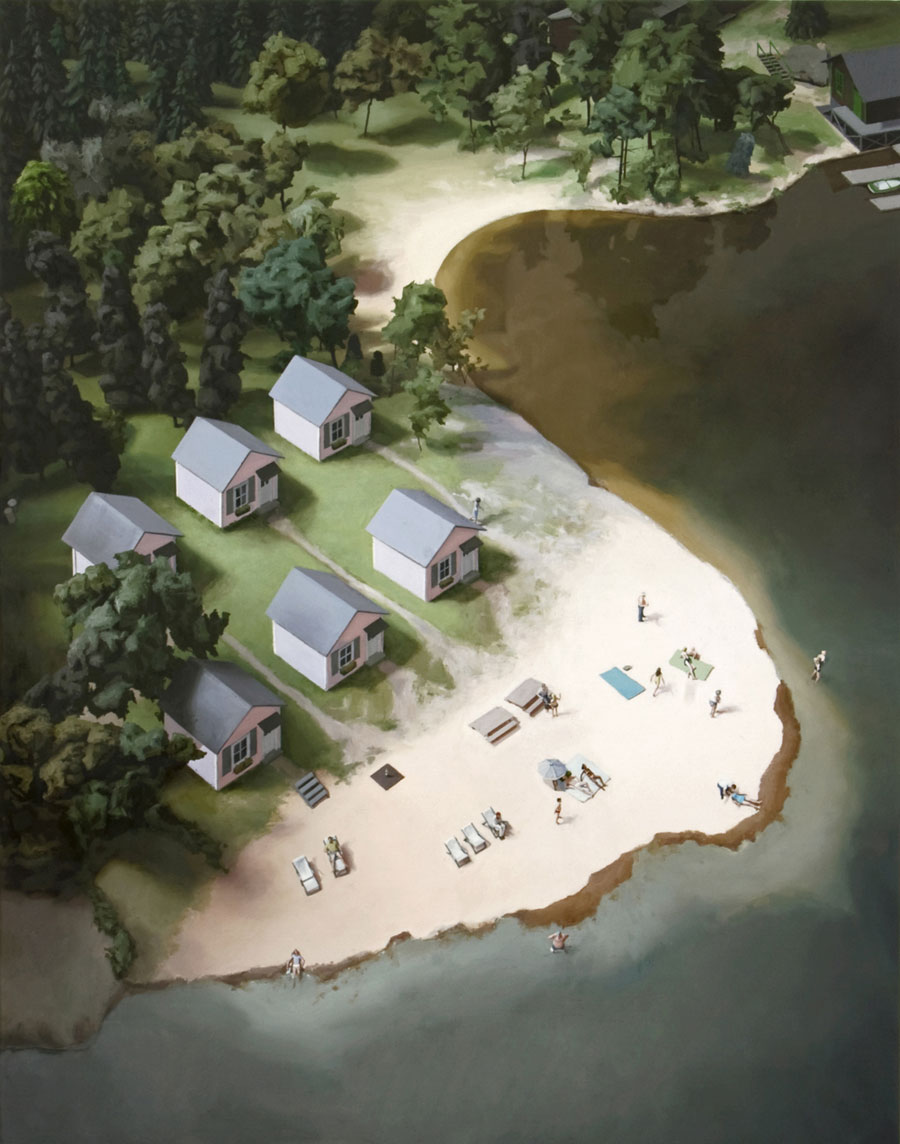
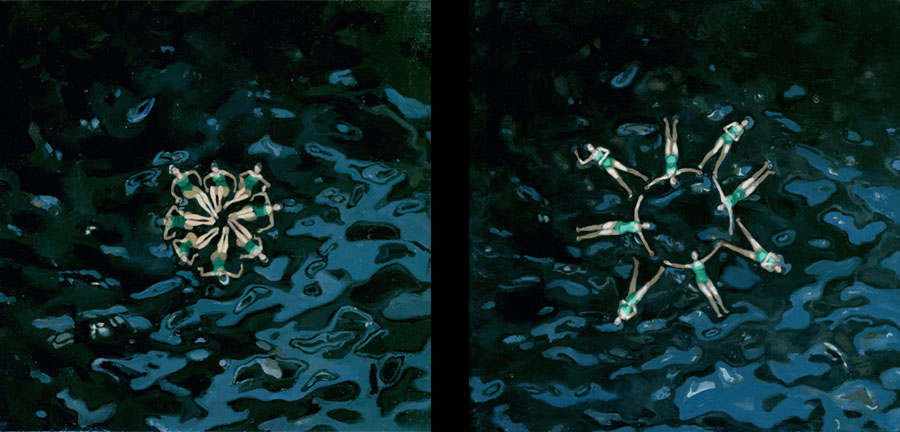
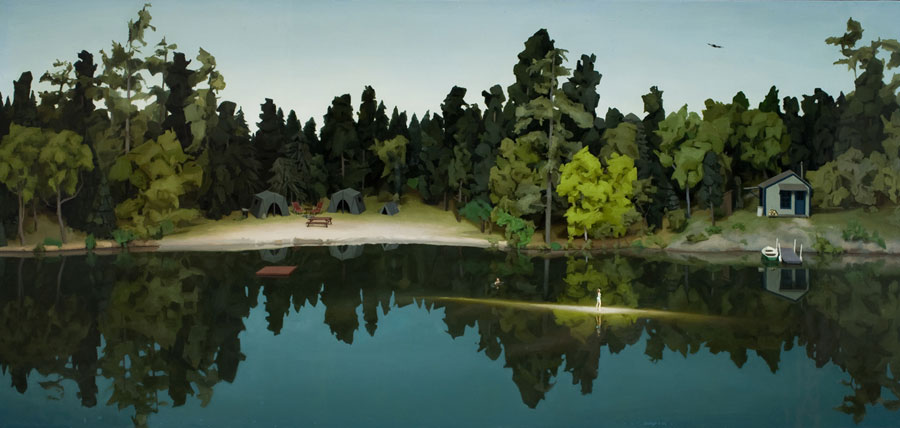
Interview continued
Has it presented any different challenges from the “Neighbors” paintings?
Painting the water has been the biggest challenge. In my model, the resin is flat so the scene on land is reflected perfectly upside down without any interference or distortion from waves. I was much more seduced by the stillness of this effect than I was expecting, so the real challenge has been to resist having absolutely calm water in every picture. The reflections and how they’re interrupted play a role in the narratives and the mood. In one painting, for instance, a dressed woman is walking into the water towards the viewer but the water’s transparency is obscured by reflections. There is enough agitation on the surface that it masks what might be going on underneath.
The focus seems to be more on people’s relationships with each other or nature rather than the home or neighborhood. Has your interest shifted? Or is this just a natural result of the new setting?
I’ve always been interested in people’s relationships with each other, but changing the setting has given me new ways to consider and present and expand those relationships. I was surprised (naively) by how much of the commentary of my last show revolved around suburbia specifically, and by how much people’s notions of suburbia influenced their interpretation of the work. I was more broadly concerned with the way people relate to one another. My current work is all set outdoors so it has opened some new themes for me to explore.
With “At the Lake,” even more than with “Neighbors,” I find myself wondering about these people and their lives. Do the images have the same voyeuristic quality for you?
A few summers back I bought a kayak to keep at my parent’s place in Connecticut. I loved how quiet paddling was, and how the land became a shifting stage. People would be on land, doing their thing, and there I’d be, floating past like an audience observing whatever drama might unfold. It reminded me of John Banvard’s painting of the Mississippi that he would scroll past audiences to give them the sense of being in a boat touring the river. So I reread Heart of Darkness, Conrad’s journey of a boater on the Congo peering warily into the woods of an “uncivilized” land. I wanted my paintings to place the viewer in a boat or maybe as a bird a little higher up, witnessing the goings on of the shoreline. Like with the “Neighbors” series, I wanted to capture people who were uninhibited and natural and honest.
We talked a bit before about fragments of stories present in the Neighbors paintings.
There are stories here, but they’re incomplete. Hopefully my paintings are more like writing prompts than anything written, if that makes sense. They capture moments that hopefully elicit specific feelings and provoke a viewer to consider the moment before or after.
Any favorite narratives you’ve come up with for these images?
A favorite is “Into the Woods” because it is a mystery and we get to witness a scene we are not supposed to see. A man drags a limp woman ashore. The light is of the fleeting variety, imparting the sense that in a blink, like the raking shadows, the figures will have disappeared into the woods and all that will remain is the innocence of a rowboat. It is unclear if there has been a tragedy on the lake, with help and civilization far out of reach, or if something more sinister is at play.
What sort of place is the lake?
The lake is a remote, isolated setting, where the world is mirrored upside down and the openness of the water invites reflection and introspection. It is a vacation destination where it is acceptable for people to be nearly naked in public, where they try to rid themselves of the burdens of civilization, relax, and have fun. It is a place where families gather and spend a lot of concentrated time together, for better or worse. It is the home of children’s camps and tenters who, for a brief time, try to reconnect with nature and imagine life prior to modern conveniences. It is a place that might be deserted in winter, except for sturdy locals and ice fishing shacks.
Are these paintings, or the model, inspired by your own vacation experiences?
When I was really young, my whole family used to spend a week or so each summer camping on a lake in Maine. Those days are highlights of my childhood. I also spent some lousy weeks at a competitive athletics-type summer camp. The model looks like it could be set in Maine, but I haven’t recreated any scenes from my experience, but definitely the atmosphere. In paddling around with my parents last summer, we called up to my mom’s old friend from our kayaks and she came down to the dock to talk to us in her bare feet and house coat and that image of her standing on the dock is loosely recreated in “Paula” although the narrative is completely different.
What’s next?
I’m still working from my lake model for a few more paintings for a show in Tokyo at Tomio Koyama Gallery opening November 28. The show will be a mix of summer and winter scenes. I’ve also started making monotypes: quick, one-of-a-kind prints that have been a lot of fun. I paint all day on plexiglass and before the paint has any time to dry, offset the image onto paper by running the painting through a press. I have less control and much less time than I would normally spend on a painting. I’ve had to think and work in a completely different way, which has been refreshing and inspiring. I’ll have my first show of prints this September at Gallery Magnus Karlsson in Stockholm. After the shows next fall, I’ll have to see what I feel like making and take it from there.
